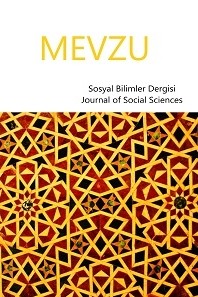Pazarlama İletişiminde Yeni Strateji "Debranding": Gıda Ürünlerinin Ambalaj Tasarımına Yönelik Nitel Analiz
Markaların tüketicilerle kurduğu en önemli görsel iletişim elementlerin-den biri ambalajdır. Bu noktada bir pazarlama iletişim elementi olan ambalaj tasarımı, çeşitli alanlarda uzman kişilerin bir araya gelerek hazırladığı önemli marka öğelerindendir. Diğer taraftan artan rekabet ortamı, değişen tüketici ve dönüşen dünyanın gereklilikleri doğrultusunda yeni pazarlama stratejileri de geliştirilmesi gerekmektedir. Bu bakımdan ambalajın tasarlanması sürecinde geliştirilen yeni stratejilerden biri debranding’tir. Ürünün ambalaj tasarımından marka logosu ve sloganı gibi öğelerin çıkartılmasına debranding denmektedir. Araştırmanın amacı katılımcılardan debranding stratejisi uygulayan gıda ürünlerinin ambalaj tasarımı hakkındaki düşüncelerini öğrenmektir. Araştırma kapsamında 12 katılımcıyla yarı yapılandırılmış sorular üzerinden birebir görüşmeler yapılmıştır. Araştırmada 3 öğrenciyle yüz yüze 9 öğrenciyle telefon üzerinden görüşmeler yapılmış, ardından elde edilen veriler transkripte dönüştürülmüştür. Daha sonra transkriptler Maxqda 2020 programı kul-lanılarak kodlanmış, içerik analizleri gerçekleştirilmiştir. Yapılan analiz sonucunda katılımcıların debranding stratejilerine karşı görüşlerinin olumlu yönde olduğu tespit edilmiştir. Katılımcıların çoğunda gıda ürünlerinin ambalaj tasarımlarında logo yerine isim veya çeşitli duygu durum içeren kavramların yerleştirilmesine karşı olumlu oldukları saptanmıştır.
Anahtar Kelimeler:
Debranding, Ambalaj Tasarımı, Logo, Nitel Araştırma
The New Strategy in Marketing Communication "Debranding": Qualitative Analysis for Packaging Design of Food Products
One of the most important visual communication items that the brands set with the comsumers is the packaging. In that point, as a marketing com-munication item, the design of packaging is an important brand item that the experts come together and prepare in various areas. On the other hand, in accordance with the necessity of competitive environment, changing consumer and transforming world, new marketing strategies must be developed. In this respect, debranding is one of the new strategies that developed in the process of packaging design. Debranding means removing the items like the logo of the brand and slogan from the packaging design. The aim of the research is to learn the opinions of participants about the food products that applied debranding strategy in packaging design. Within the research, one-to-one meeting have been done with 12 participants via semi-structured questions. In the research, meetings have been done with 3 students face-to-face and 9 students via telephone, subsequently, the obtained data have been converted to transcript. Then the transcripts have been coded by using the programme Maxqda 2020, content analysis have been carried out in the consequence of condusted research. It has been ascertained that the opinions of participants that are positively to the strategies of debranding. It has been determined that most of the participants are positive to placing the name or various concepts including mood instead of logo in the packaging design of food products.
Keywords:
Debranding, Packaging Design, Logo, Qualitative Research,
___
- Akgün, C. (2013). Ürünün Sihirli Dünyası: Ambalaj. Grafik Tasarım Görsel İletişim Kültür Dergisi, pp.108-122. Becer, E. (2015). İletişim ve Grafik Tasarım. Ankara: Dost Kitabevi Yayınları.
- DuPuis, S. & Silva, J. (2011). Package Design Workbook: The Art and Science Of Successful Packaging. Beverly Massachusetts, Rockport Publishers.
- Erdal, G. (2009). Etkili Ambalaj Tasarımı. Bursa: Dora Yayıncılık.
- Gallo, M., Romano, E. & Santillo, L. C. (2012). A Perspective on Remanufacturing Business: Issues and Oppurtunities. International Trade from Economic and Policy Perspective, pp.209-234.
- Güçlü, İ. (2019). Sosyal Bilimlerde Araştırma Yöntemleri. Ankara: Nobel Akademi Yayıncılık.
- Güler, A., Halıcıoğlu, M., B. & Taşğın, S. (2013). Sosyal Bilimlerde Nitel Araştırma Yöntemleri. Ankara: Seçkin Yayıncılık.
- Jessica, H. & Hannah, M. (2014). Youbranding: The Marketing Strategy Of Replacing The Corporate Brand Name With Personal Names. Bachelor Thesis, Stockholm School of Economics Institution for Marketing and Strategy, Sweeden.
- Kear, A., Robin, B., G. & Christidi, S. (2013). Debranding in Fantasy Realms: Perceived Marketing Opportunities within The Virtual World. International Journal of Advanced Computer Science and Applications. 4,(8).
- Klimchuk, M. R. & Krasovec, S. A. (2012). Packaging Design: Successful Product Branding from Concept to Shelf. Hoboken: John Wiley & Sons, Inc.
- Merriam, B., S. (2018). Nitel Araştırma: Desen ve Uygulama İçin Bir Rehber. (Selahattin Turan Trs. Ed.), Ankara: Nobel Akademi Yayıncılık.
- Mogaji, E. (2021). Brand Management: An Introduction through Storytelling. Switzerland: Palgrave Macmillan.
- Odabaşı, Y. & Oyman, M. (2004). Ürün ve Ambalaj, in Ambalaj Tasarımı. (Ceyhun Akgün Ed.), İstanbul: Matbaa Teknik Dergisi Yayınları.
- Özbakır, U., M. (2019). Türk Markalarının "Debranding" Stratejisine Uyumu. Galatasaray Üniversitesi İletişim Dergisi, (31), pp.233-250.
- Parasuraman, A. (1983). ‘Debranding’: A Product Strategy With Profit Potential. Journal of Business Strategy, 4(1), pp.82-87.
- The Coca Cola Company. https://cocacolaunited.com/blog/2015/05/18/share-coke-bigger-better-ever/, (Accessed:15.12.2022).
- URL: https://www.digitalvidya.com/blog/case-study-on-coca-colas-share-a-coke-campaign/, (Accessed:15.12.2022).
- Van Manen, M. (2016). Researching Lived Experience: Human Science for an Action Sensitive Pedagogy. Second Edition. Routledge, Taylor & Francis Group.
- Yayın Aralığı: Yılda 2 Sayı
- Başlangıç: 2019
- Yayıncı: Ali SEVER
Sayıdaki Diğer Makaleler
EMT Çevirmen Yeterliklerinin Piyasada İstenen Kriterlerle Karşılaştırılması: Türkiye Örneği
Çevre Eğitimi Alan Fen Bilgisi ve Sınıf Öğretmeni Adaylarının Doğaya Yönelik Metaforik Algıları
Sokrates, Platon ve Aristoteles’in Atina Demokrasisine Eleştirileri
Harun TÜYSÜZ, Selim YİĞİT, Zafer KAMAK
Metaverse Çağında Öğretmenlik Mesleğinin Geleceğini Düşünmek
